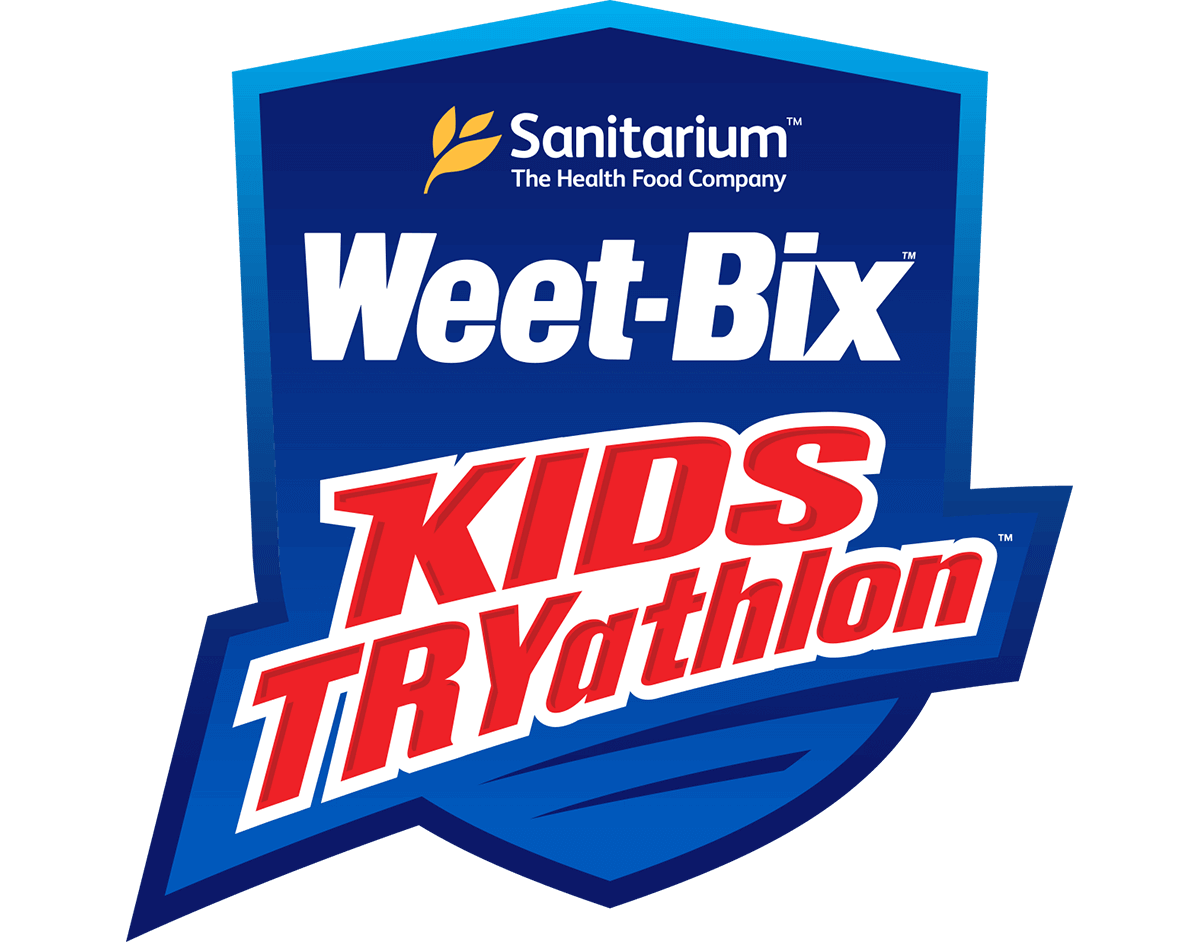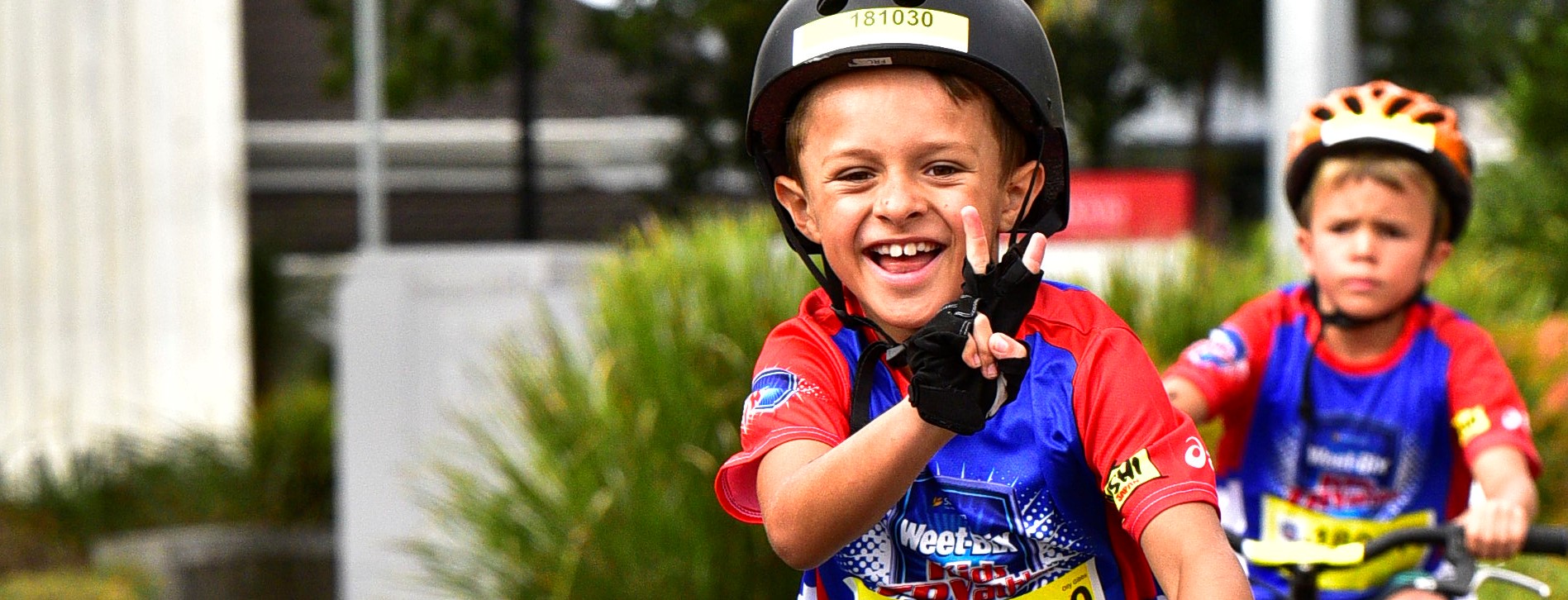It’s a good idea to do some training before the TRYathlon. Following a simple training plan will make sure that when the event day comes around you are well prepared and able to enjoy the buzz of the TRYathlon.
In the weeks leading up to the event it’s recommended you do regular, small activities to build your fitness and confidence. Even if you can’t start a full four weeks out, just get started when you can. Your training plan should include swimming, biking and running as well as practicing transitioning from each activity.
PARENTS
Your goal should be to help make training as much fun as possible and to build your child’s fitness level to the point they can cover the distance of the swim, bike and run comfortably. That way they will be far more confident and prepared to complete the TRYathlon and will enjoy it so much more.
If your child is not a confident swimmer, cyclist or runner then make sure you spend some time with them in the pool, on the bike or running together. If possible get them some lessons so they are confident about completing the TRYathlon.
TRY Trainer Programmes
Check out the Weet-Bix TRY Trainer Programmes to help you get ready for your TRYathlon.
There are 3 training plans to choose from which you can follow exactly or use as a guide.
- Beginner: recommended for 7-9 year olds
- Intermediate: recommended for 10-12 year olds
- Advanced: recommended for 13 years and above
Training Tips
Set a goal
It’s a good idea to set a goal before you start a big or new challenge, like the TRYathlon. Your goal maybe to complete the entire TRYathlon without stopping. Whatever your goal is, write it down and work out the steps that are going to get you there.
Toyota Ambassador and Olympian Dame Valerie Adams top three tips are:
- Set Goals
- Have fun doing what you’re doing
- Be Prepared to work for it
Warming Up & Cooling down
Don’t forget to stretch your muscles before you begin to exercise to help prepare your body and prevent injury. Start with a short warm-up first, such as walking or jogging in place or event some dancing to your favourite song. When you finish training for the day, cool down and stretch again to help your muscles recover.
Get used to your gear
It is a good idea to practice in the clothes and gear you will use on the day. Especially if you are not use to biking or running in your togs. Make sure you can tie your shoe laces and buckle up your helmet too.
Get familiar with the course
Try and visit where the TRYathlon will take place so you become familiar with the course. Practice swimming at the beach or pool you will be swimming in. Run around the park or follow the bike course.
Always put safety first
The highest priority should always be your safety no matter what the activity. A safe bike, a good pair of running shoes, and always wearing a helmet that fits is important. During training, supervision is important – especially if you are swimming. Using parks and fields and areas apart from traffic are the safest places to practice.
If you are out training in the sun then don’t forget to wear a hat and apply sunscreen. It’s a good idea not to train in the heat of the day. So in the morning or after school is a good idea.
Pacing
It is important to learn how to pace yourself. The TRYathlon is not a sprint! Pacing means use all of your energy at the beginning so you can finish strong without having to stop because you are too tired. A good way to practice this is to run 1 kilometre with a parent and start off slowly and then every 250 meters slowly build up and finish strongly. By learning how to pace, you’ll have a much better day.
Don’t Over Train
It’s important not to over-train your body because you can become tired, injuries might even occur and you won’t be at your best. It’s important to schedule rest days. During a week’s training you should try to swim, bike, and run at least once each week.
Sleep
Getting enough sleep is one important thing you need to do, especially if you are doing more physical activity that you are used to.
Sleep gives your body time to recover, conserve energy, and repair and build up the muscles worked during exercise.
It will also give you more time to dream about crossing the finish line, with everyone cheering you on, and receiving your medal from one of New Zealand’s top sporting stars!
Have Fun!
Have fun while you train. Turn your training into a game or plan to train with friends or your family – it’s a lot more fun when everyone is involved and will help keep you motivated.
If you can’t train for a reason then come up with some creative ways to get your training in, like running around the house for 5 minutes. Remember that even playing or running around with friends, or going biking together as a family still counts.

